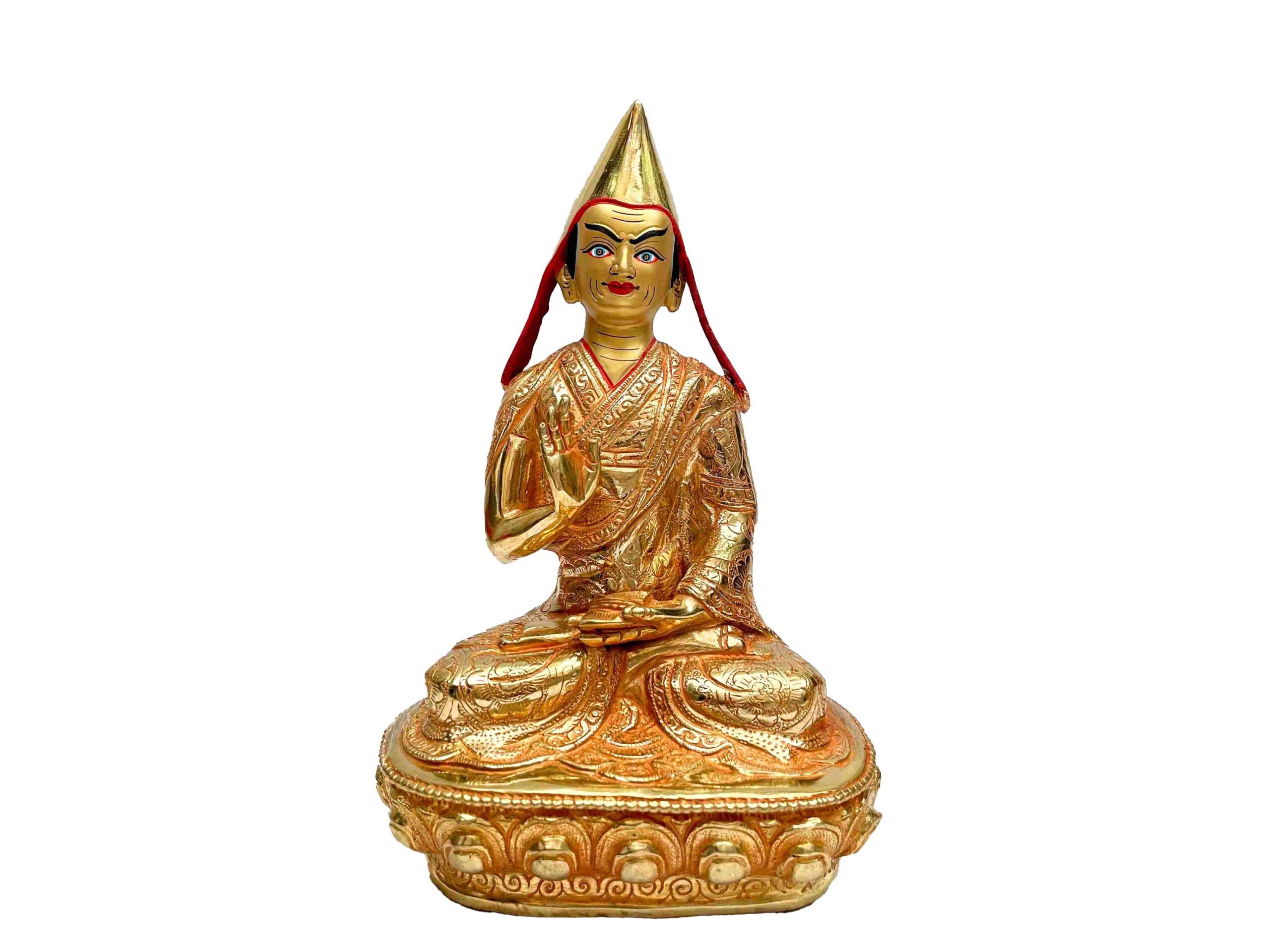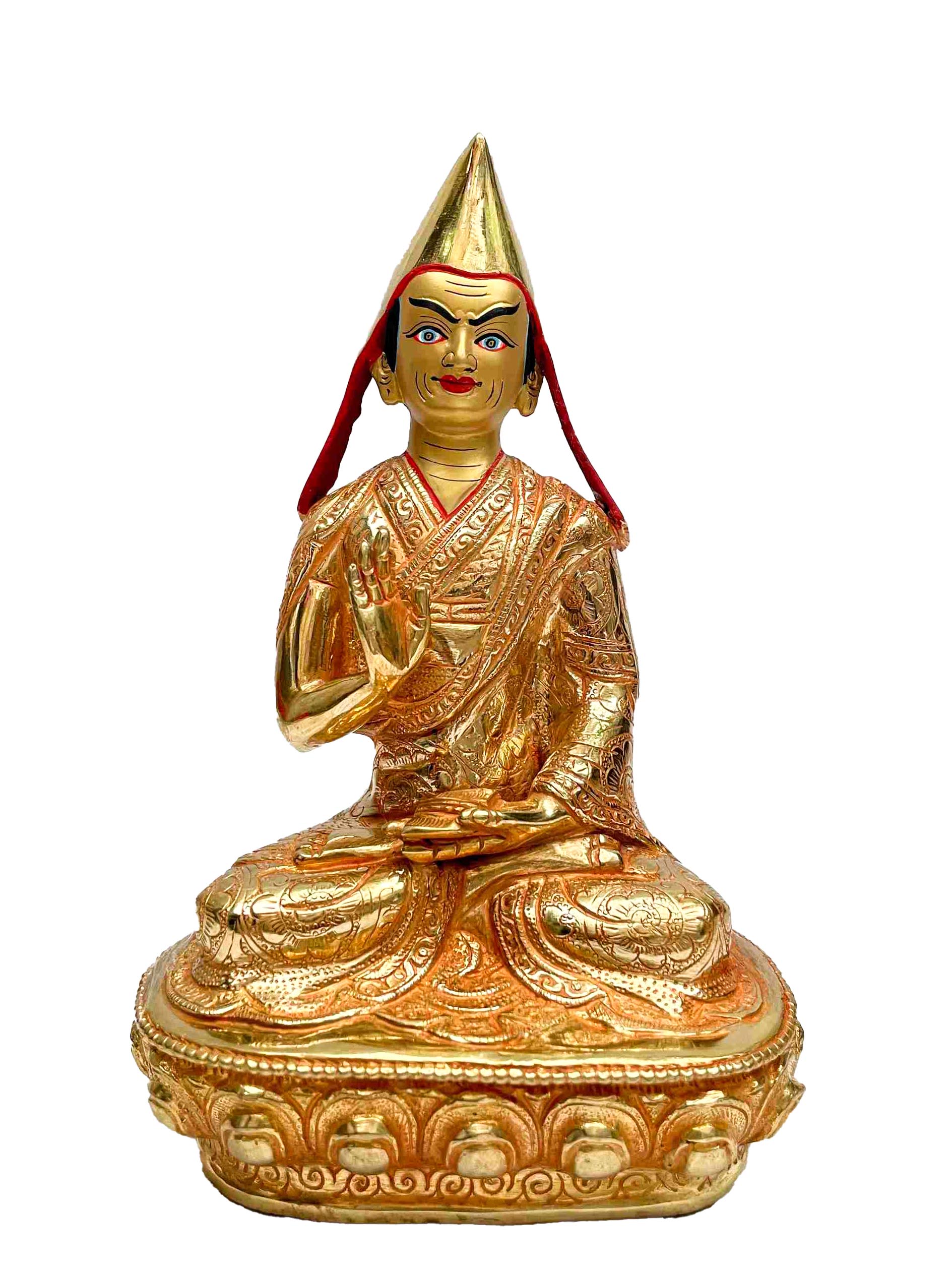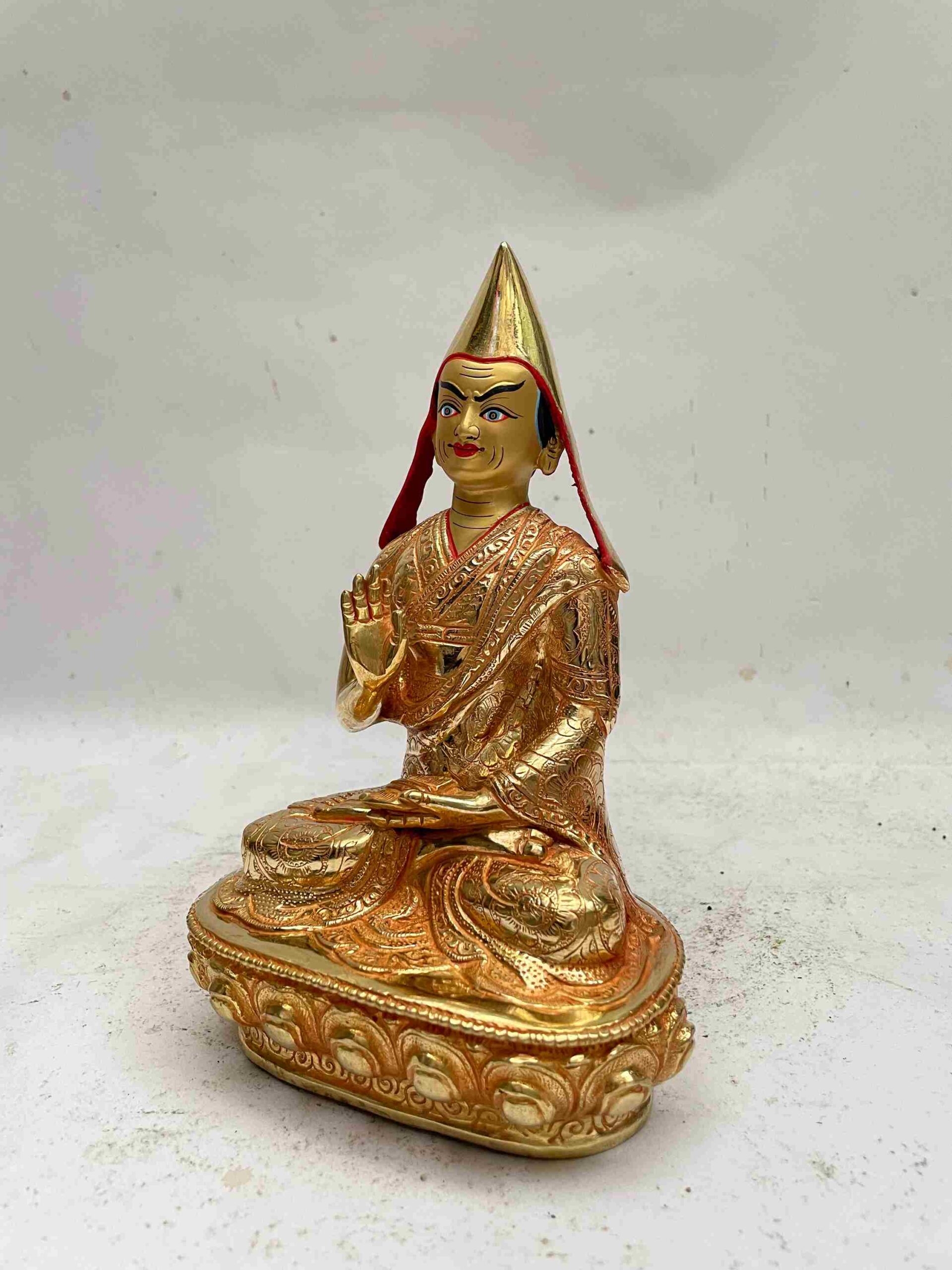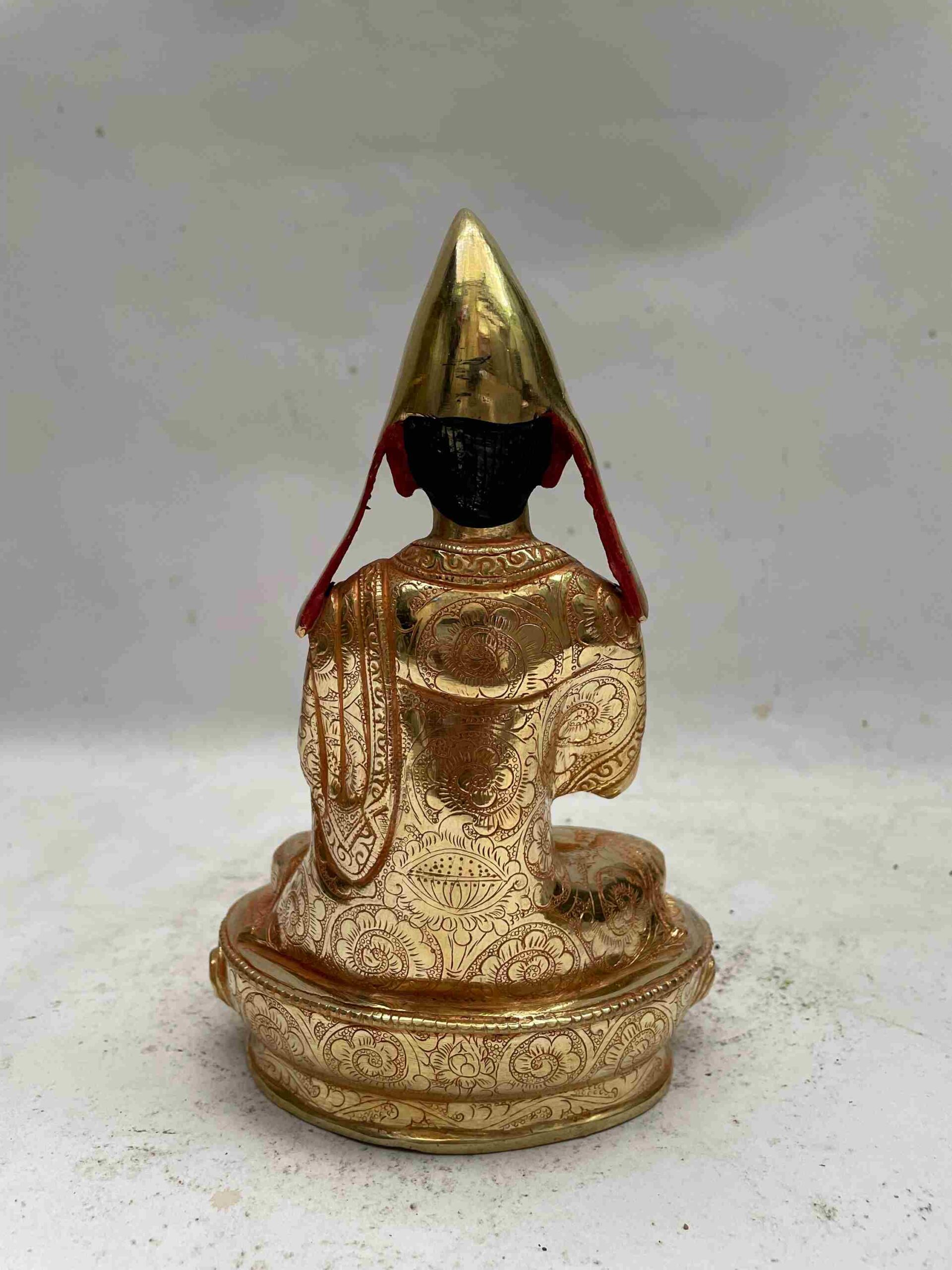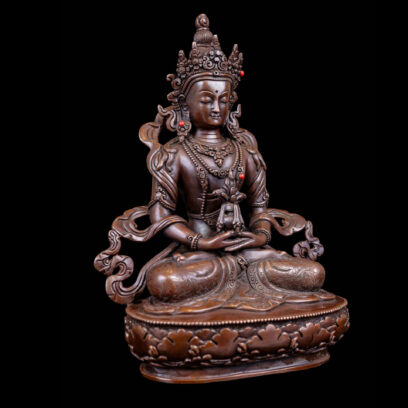Buddhist Handmade Statue of Tsongkhapa – Full Fire Gold Plated with Gold-Painted Face
-
Item Code: HME26129
-
Weight: 717 grams
-
Dimensions (cm): 19 x 12 x 8
-
Material: Copper
-
Finish: Full Fire Gold Plated, Face Hand-Painted with Gold
-
Availability: Available
Tsongkhapa: The Luminary of the Gelug Tradition
Tsongkhapa, often translated as “The Man from Onion Valley,” was one of the most influential figures in Tibetan Buddhism. Born in Amdo, he became a renowned scholar, philosopher, and spiritual reformer whose profound teachings gave rise to the Gelug school—one of the major traditions in Tibetan Buddhism. Reverently known by his ordained name Losang Drakpa, or simply Je Rinpoche, Tsongkhapa authored pivotal texts including the Lamrim Chenmo (The Great Treatise on the Stages of the Path to Enlightenment) and Ngakrim Chenmo (The Great Treatise on the Stages of the Mantra Path), outlining the systematic path to enlightenment through both sutra and tantra.
Depicted in this statue with serene wisdom and spiritual clarity, Tsongkhapa serves as a guiding light for practitioners committed to the path of compassion, discipline, and wisdom.
Gold-Painted Face
The face of this Tsongkhapa statue is carefully hand-painted with gold, accentuating the eyes and lips to convey subtle spiritual expressions that carved metal alone cannot fully capture. In Buddhist tradition, this practice is both an artistic and sacred ritual—symbolizing the awakening of the statue’s spiritual presence. It infuses the piece with vitality, making it suitable for consecration and devotional practice. The process reflects the devotion and artistry of Nepalese craftsmen, who attend to each detail with profound reverence and care.
Full Fire Gold Plating (Mercury Gilding)
This piece is fully plated using the traditional fire gold gilding technique, also known as mercury gilding. Unlike modern electroplating, this time-honored method involves applying a layer of gold amalgam, then using heat to fuse the gold onto the surface. Although more labor-intensive and costly, it results in a rich, luminous finish that is celebrated for its durability and spiritual authenticity. The method has seen a resurgence in Nepal due to its cultural value and aesthetic superiority, making it a prized choice for sacred sculptures like this Tsongkhapa.
Created with the Lost-Wax Casting Technique
This Tsongkhapa statue is handcrafted using the ancient lost-wax casting method. Artisans first sculpt a detailed wax model, which is encased in ceramic layers to form a mold. Once the mold is heated and the wax removed, molten copper is poured in, creating an exact metal replica. After cooling, the outer shell is carefully broken away, revealing the finished sculpture. This traditional technique ensures unmatched detail, durability, and individuality in each piece—no two statues are exactly alike.
